Research Topics Overview
Mankind has introduced new selective powers to the world, resulting in massive species extinction as evidenced by IBPES and WWF’s Living Planet Index. For me as a riverscape/ wetland ecologist, this tragedy becomes specifically evident when regarding the dramatic fate of migratory fish and riparian biota. It is a special task for us to improve management and engineering approaches that sustain biodiversity and ecological processes. I have concluded several projects on sustainable management of the Pantanal in South America, and for the preservation of its headwaters (e.g. Siqueira et al. 2018). Currently, I am interested in dam removal and in mitigation of plastic pollution in river banks in cooperation with INALI (see papers by Blettler et al.).
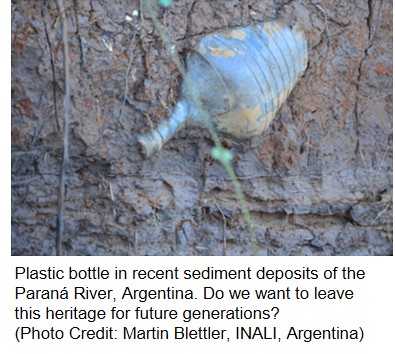
bottom up
We often forget this, but humans are a biological species. Just like other animals, we are influenced by our environment and modify it. We need to understand human-nature-relationships to integrate these insights into management strategies. The River Culture Concept (Wantzen et al. 2016) acknowledges this by analyzing in parallel the adaptations of humans and other organisms to the hydrological cycle (Floodpulse (Junk & Wantzen 2004, Wantzen et al. 2006, Environmental Flow Concept (Arthington et al. 2018)) in riverscapes and at lake sides. The central statement is that it is possible to learn from nature (ecosystem level bionics) and from human cultural adaptations to provide a better river management, by living in the rhythm of the river. In a current book project for UNESCO Press (River Culture: life as a dance to the rhythm of the waters, publication planned for 2021), I gather contributions from all over the world that show how this harmonious coexistence is possible.
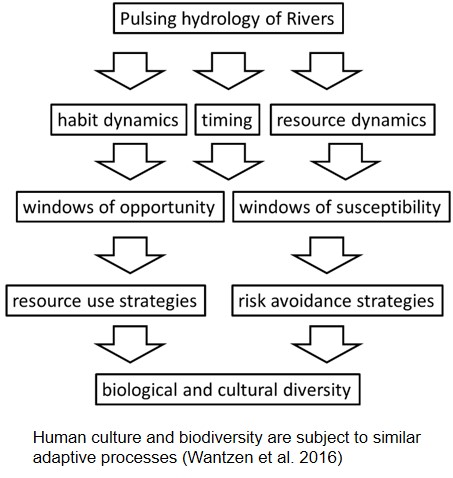
bottom up
Urban river systems are strongly modified ecosystems, and their restoration is a complex problem with ecological and societal aspects (Wantzen et al. 2019). In a practical approach resulting from the River Culture Concept (Wantzen et al. 2016), I am currently gathering scientists to suggest feasible solutions (publication by Zingraff et al. in progress), how to harmonize the needs of nature and the needs of humans when it comes to the design of urban river banks and multipurpose floodplains. Four PhD students currently work on this issue in Europe, Asia, and Africa.
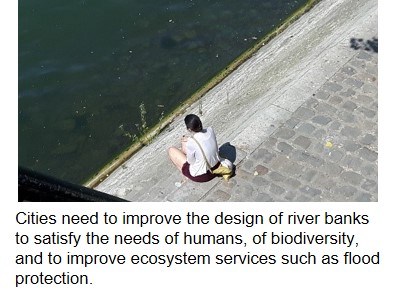
bottom up
Carbon storage, vegetation type, hydrology and decomposing organisms are the cornerstones of the carbon budget of ecosystems in the aquatic-terrestrial transition zone. In the Worldwide Decomposition Project I could show how the chemical composition of plants influences decomposing aquatic invertebrates (Wantzen & Wagner 2006). Later, we could identify thresholds in inundation period that are decisive on the sink/source behaviour in large wetlands in South America (Vega et al. 2014) and in small seasonal wetlands in France (Hervé et al. 2018). These insights result in suggestions for management and conservation schemes for riparian wetlands (e.g., Wantzen et al. 2008, 2013) and for agroscapes (CarBioCial project by BMBF).
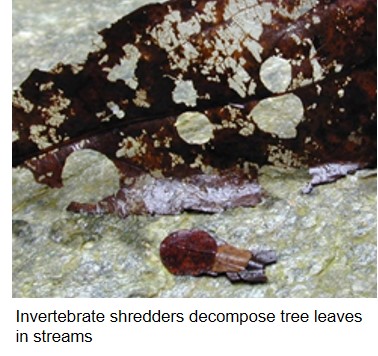
bottom up
Ecosystem management is based on a choice between desireable and unwanted endpoints. To protect populations of heritage species better, and to reduce the success of invasive species, it is important to know the trigger points within their species traits, and to manipulate the ecosystem accordingly. Therefore, we need detailed insights into the entire life cycle of the considered species. Moreover, it is important to identify the natural dynamics and the interannual variations of ecosystems that are conducive to ecosystem functioning and maintenance of biodiversity. In the case of the Giant River Pearl Mussel (Pseudunio auricularius, previously Margaritifera auricularia), I designed an European LIFE+ biodiversity project to uncrypt the causes of their dramatic decline and to provide help for their re-establishment or conservation of the last populations including a catalogue of best management practices and alternative host fish for their parasitical larval stage (papers by Soler et al.). For an invasive crustacean (Dikerogammarus villosus), we could show thermal and physical barriers for their success over native invertebrates applying field experiments (papers by Hesselschwerdt & Wantzen 2008, 2009, 2016). Applying habitat models we could show that in spite of a generally successful restoration, a single missing habitat, or intensive use of the river for leisure activities could limit the success of the re-establishment of target fish species (Chondrostoma nasus), see papers by Zingraff et al. 2018a, b.
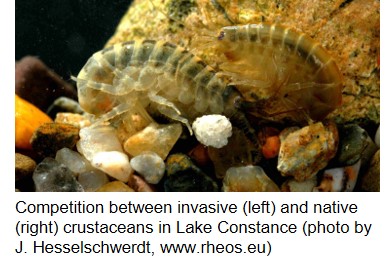
bottom up
One of the foci of my research lies in the organism-mediated transfer of carbon in these systems, e.g. how do streams profit by terrestrial organic matter input from the neighboring forest? How do floodplain organisms use the ressources during and after the change from wet to dry conditions? The comparison between tropical and temperate systems using stable isotope analysis (SIA) helps us understand these processes better and to develop further ecological concepts such as the updates of the Flood Pulse Concept in rivers, streams and lakes (Junk & Wantzen 2004, Wantzen et al. 2002, 2006, 2011).
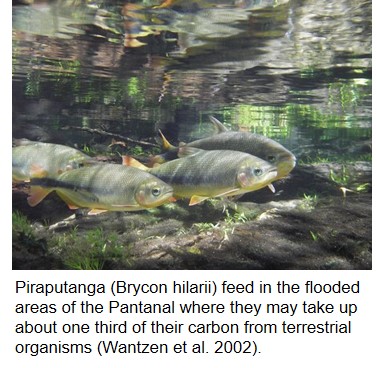
bottom up
Without knowing the biogeographical distribution of species and their species traits, it is impossible to protect them, or to use them for biomonitoring. While the status of this knowledge is relatively good in the Global North, ironically, the most biodiversity-rich places of the world are often the poorest concerning their known biodiversity. For many years, I am contributing to a book series called „Aquatic Biodiversity in Latin America“, which enables experts to make their life-time achievement for the identification and systematics of aquatic species available for the greater public. So far 6 volumes have been published. Moreover, especially with my colleagues from the Argentinian Institute for Limnology, INALI, I study the parameters responsible for the local distribution of benthos in South American Rivers (see papers with Marchese, Drago, Ezcurra, and Blettler). Interestingly, global patterns of distribution, especially for the sandy potamal zone of rivers, arise (Wantzen et al. 2014). Species help us to better understand the quality status and the functioning of ecosystems. Throughout my carreer, I have been contributing to the further development of biomonitoring systems. During my PhD studies in Brazil, my quality assessment method for streams including standardized artificial substrates and rapid assessment protocols, was adopted in several states. Currently, I make a plea to harmonize biomonitoring systems for aquatic ecosystems in Latin America.
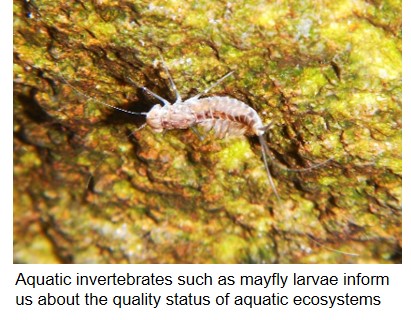
bottom up